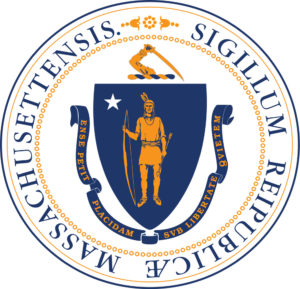
FOR IMMEDIATE RELEASE:
December 23, 2022
CONTACT
Ilyse Wolberg
Ilyse.Wolberg@mass.gov
617-360-1715

Baker-Polito Administration Celebrates the Planting of the 35,000th Greening the Gateway Cities Tree
Boston – Since taking office in 2015, the Baker-Polito Administration has prioritized efforts to increase tree canopy cover in urban areas through the Greening the Gateway Cities Program, and today the Administration announced the program has surpassed a significant milestone, the planting of the 35,000th tree. To date, the Administration has planted 35,372 trees across 23 cities throughout the Commonwealth, and has invested approximately $27 million for tree plantings, which is a key strategy to make communities more resilient to climate change by improving air quality, reducing urban heat islands, and lowering energy consumption.
“By proactively expanding and increasing tree planting efforts within the Commonwealth’s Gateway Cities, our Administration is effectively enhancing the climate resiliency of local communities and neighborhoods and directly addressing the impacts of climate change,” said Governor Charlie Baker. “The planting of the 35,000th tree is a significant milestone that represents strong partnerships between state and municipal governments and local organizations in order to provide critical environmental and social benefits that will last for decades to come.”
“The Greening the Gateway Cities Program serves as an excellent example of the collective efforts of so many to ensure the Commonwealth not only meets its long-term climate goals but also becomes a more resilient place to live, work, and raise a family,” said Lieutenant Governor Karyn Polito. “By increasing the tree canopy in many urban neighborhoods, we are improving, protecting, and enhancing important environmental resources while also delivering tremendous benefits to our health and the economy.”
This year, the Baker-Polito Administration expanded the Greening the Gateway Cities Program to include Barnstable, Everett, Malden, Taunton, and Worcester, and will be working to plant at least 2,400 trees in each municipality. Importantly, the program utilizes trees to reduce energy use, decrease flooding from stormwater runoff, and improve the quality of life in neighborhoods, especially during the increasingly hot summers in Massachusetts. Tree plantings are also focused within Environmental Justice neighborhoods – areas with over 25% of residents who are low-income, minority, or non-English speaking.
“Through the Greening the Gateway Cities Program, we are improving equity in communities by planting more trees where shade and cooling is needed in order to help urban residential areas with energy efficiency,” said Energy and Environmental Affairs Secretary Beth Card. “This popular program connects residents in Gateway Cities to nature and offers additional benefits like protecting invaluable infrastructure, properties, and green spaces.”
The program is a partnership between the Executive Office of Energy and Environmental Affairs (EEA), the Department of Conservation and Recreation’s (DCR) Urban & Community Forestry Program, the Department of Energy Resources (DOER), and the Department of Housing and Community Development (DHCD), along with Gateway Cities and local grassroots organizations. DCR foresters work with neighborhood non-profit organizations to help with outreach and community support to increase awareness of the program. Additionally, the Greening the Gateway Cities Program also distributes grants through the EEA to communities and non-profits to augment tree planting that DCR is actively pursuing within designated planting zones. This increase in tree planting work will achieve even greater energy savings from reduced heating and cooling costs, further promote clean air, and contribute to larger reduction of urban “heat island” impacts that are being exacerbated by climate change.
“Through the Baker-Polito Administration’s ongoing efforts, this program has made a tangible impact in a very short period of time by providing the positive impacts new trees can have on targeted communities” said Department of Conservation and Recreation Commissioner Doug Rice. “Together, we have provided a vital tool to make our Gateway Cities more resilient to the impacts of climate change, such as extreme heat.”
To increase the urban tree canopy, the program aims to plant five trees per acre, reducing the Urban Heat Island effect and decreasing summer air temperatures in city neighborhoods through shading and increased transpiration. Additionally, in the winter months, mature tree trunks and branches help to randomize wind patterns and decrease heat loss by air infiltration in poorly insulated homes. For more information regarding the Greening the Gateway Cities Program, please visit the program’s webpage.
###




